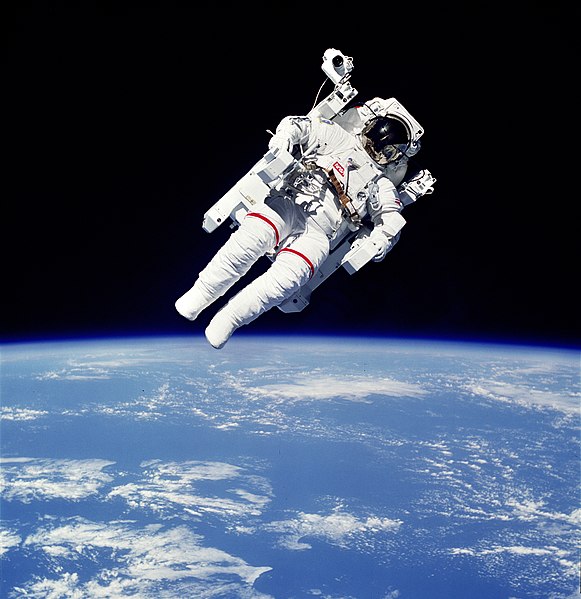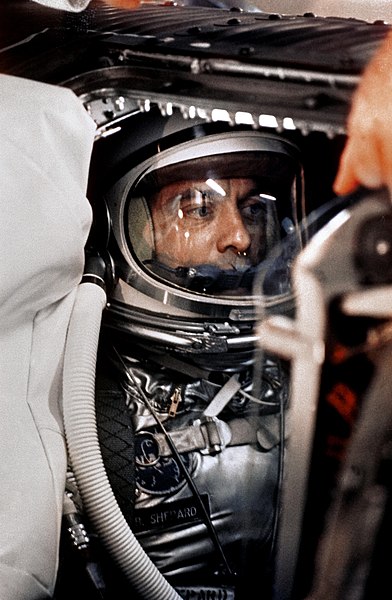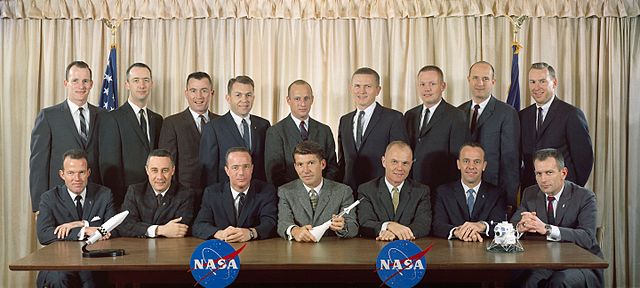Yuri Alekseyevich Gagarin was a Soviet pilot and cosmonaut who, aboard the first successful crewed spaceflight, became the first human to journey into outer space. Travelling on Vostok 1, Gagarin completed one orbit of Earth on 12 April 1961, with his flight taking 108 minutes. By achieving this major milestone for the Soviet Union amidst the Space Race, he became an international celebrity and was awarded many medals and titles, including the nation's highest distinction: Hero of the Soviet Union.
Gagarin in 1961
Gagarin family home in Klushino
Gagarin as an air cadet in the Saratov flying club c. 1954
Gagarin's Vostok 3KA capsule and an effigy of him on display at the RKK Energiya museum in 2010
An astronaut is a person trained, equipped, and deployed by a human spaceflight program to serve as a commander or crew member aboard a spacecraft. Although generally reserved for professional space travelers, the term is sometimes applied to anyone who travels into space, including scientists, politicians, journalists, and tourists.
NASA astronaut Bruce McCandless II using a Manned Maneuvering Unit outside Space Shuttle Challenger on shuttle mission STS-41-B in 1984
Alan Shepard aboard Freedom 7 (1961)
The first sixteen NASA astronauts to be selected, February 1963. Back row: White, McDivitt, Young, See, Conrad, Borman, Armstrong, Stafford, Lovell. Front row: Cooper, Grissom, Carpenter, Schirra, Glenn, Shepard, Slayton.
The first eleven Soviet cosmonauts to fly, July 1965. Back row, left to right: Leonov, Titov, Bykovsky, Yegorov, Popovich; front row: Komarov, Gagarin, Tereshkova, Nikolayev, Feoktistov, Belyayev.








